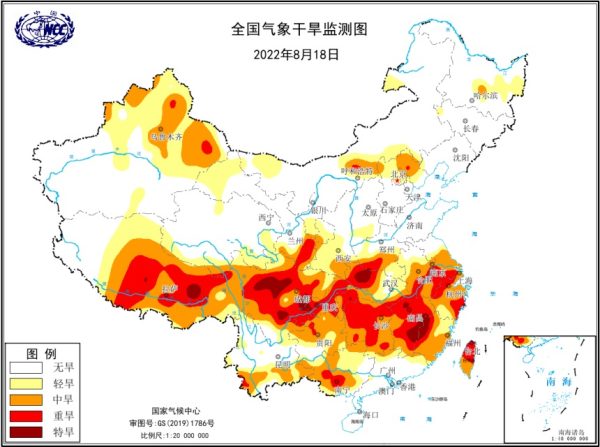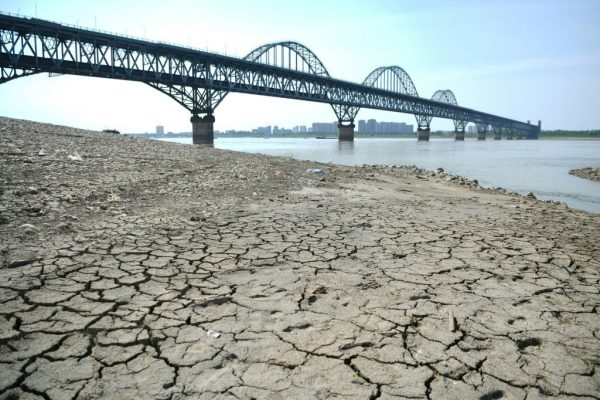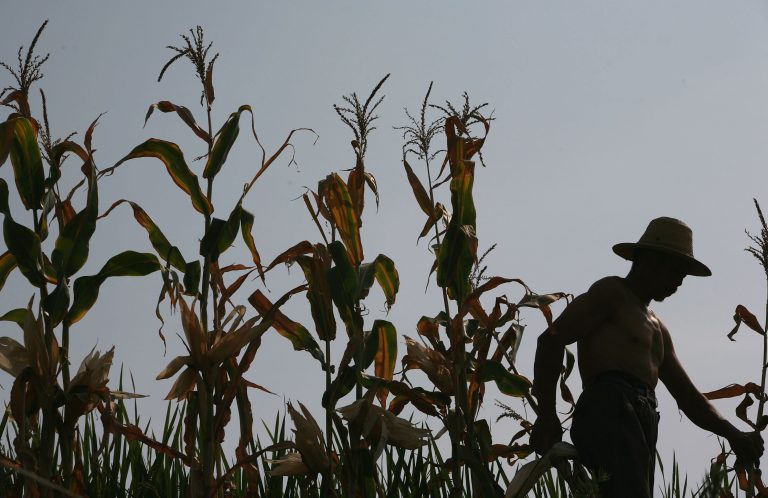Farmers across China are facing reduced harvests due to this year’s scorching heat waves and droughts that have destroyed or damaged 66 million mu (about 10 million acres) of farmland throughout the country.
China is currently experiencing one of the most severe drought seasons since national record-keeping began in 1961.
According to a notice issued on Aug. 30 by the Chinese Ministry of Water Resources, the Yangtze River basin — the world’s third largest river — has been receding due to persistent high temperatures and scarce rainfall since early July. With less water coming from the rivers, water levels have continued to decline, resulting in fast spreading droughts.
MORE ON EXTREME WEATHER IN CHINA:
- Battered by Intense Heat and Drought, China’s Sichuan Province Warns of ‘Particularly Severe’ Electricity Cuts
- Scorching Heat Waves Sweep Through 84 Cities in China, Killing Multiple People and Triggering Govt. Power Cuts
- Massive Flooding in China Submerges Roads, Traps Residents Inside Leaking Buildings
- Torrential Downpours Kill Dozens of People in Southern China
The notice added that during the peak of this year’s drought season on Aug. 25, the most impacted areas near the Yangtze were seen in the 10 provinces of Chongqing, Sichuan, Hubei, Hunan, Jiangxi, Anhui, Henan, Guizhou, Shaanxi, and Jiangsu.

Though some regions saw minimum amounts of rain, over 43 million mu of land surrounding the Yangtze River basin were still severely affected by drought conditions — leaving farmers scrambling to find solutions for the lack of water.
Success
You are now signed up for our newsletter
Success
Check your email to complete sign up
A mu is a Chinese measurement of land equal to about a sixth of an acre.
The 10 afflicted provinces and surrounding regions accounted for approximately 43 percent of China’s total grain output in 2021, with the majority of them seeing no rainfall this month and daily temperatures that soared past 43 °C (100 °F).
China’s Ministry of Water Resources predicts that although rainfall in the upper reaches of the Yangtze river is expected to be 10 percent higher compared to the same period last year, the drought in some severely arid areas will likely worsen, and see less rainfall than previous seasons.
Gu Binjie, an inspector for China’s Flood Control and Drought Relief, said at a press conference held by the water resources ministry on Aug. 19 that local governments should “prepare to fight long-term and find ways to counteract severe drought conditions.”
Mid-season rice, summer corn, soybeans affected
Gu added that as of Aug. 22, the main crops affected by this year’s drought are rice, summer corn, soybeans, as well as year-long produce such as vegetables and fruits.
A farmer in Sichuan Province told The South China Morning Post (SCMP) that over 50 percent of his crops had wilted as a result of the extreme heat and lack of rainfall.
“It has never been more difficult than this year,” the 68-year-old farmer said, adding that sturdier crops that managed to survive — such as peanuts, green vegetables and sweet potatoes — were minimal.
According to a statement released by China’s Ministry of Rural Affairs, the Yangtze River basin has been receding at an alarming pace since August — resulting in subpar soybeans and rice grains — crops most sensitive to temperature and moisture levels during the early growth stages.
Continuing drought conditions will likely also impact the region’s soil quality, leading to long-term complications and lower agricultural yields, the office noted. Meanwhile, the provinces of Hunan and Hubei have all seen “cracked rice fields” and withered rice grains as the soil’s temperature rises due to the lack of moisture.
Drought in prime flooding season
Though July and August are usually considered rainy seasons in the Yangtze River basin, this year’s rainfall has been much scarcer than expected — with over 10 provinces experiencing little to no precipitation.
The prolonged drought conditions prompted China’s national observatory to issue an “orange alert” — the second highest level of alarm — across multiple provinces, affecting the lives of approximately 2.5 million residents.

According to local reports, multiple Yangtze River tributaries are now starting to run completely dry. On Aug. 6, water levels at the Xingzi measuring point located in Poyang Lake — the largest freshwater lake in the country that connects to the Yangtze River — dropped to 11.99 meters (less than 40 feet) — the lowest levels since modern record-keeping began.
Official data also showed that since mid-June this year, precipitation levels in the Yangtze River basin have drastically reduced — logging approximately 30 percent less water compared to the same period last year.
Adjusting reservoir water, drilling wells, pumping river water
As of mid-August, the country’s Water Resources Ministry began “urgently mobilizing the reservoirs of the upper reaches of the Yangtze River, the Dongting Lake water system and the Poyang Lake water system,” in order to revert water to the nearby provinces of Hubei, Hunan, Jiangxi, Anhui, and Jiangsu.
However, water conservancy experts have pointed out that in order to follow the Chinese government’s requirements of “resisting severe and long-lasting drought”, the reservoir’s current water levels should be carefully calculated, and used sparingly in order to avoid long-term complications.
“If water is used excessively in order to fight drought and ensure this fall’s harvest, it may also result in businesses being forced to shut down in order to conserve water and ensure sufficient irrigation for the agricultural sector,” Liu Zhiyu, an official from the Ministry of Water Resources said, adding that the Yangtze River’s tributaries had decreased by 20 to 80 percent compared to the same period in previous years.
“If the drought continues into the fall and winter — which would be the worst case scenario — there has to be a priority system in place where the water supply is allocated in an efficient and transparent manner,” Lu Juan, director of China’s Academy of Water Resources and Hydropower Sciences for Flood Control and Drought Relief said.














